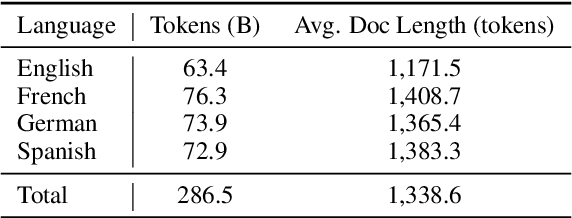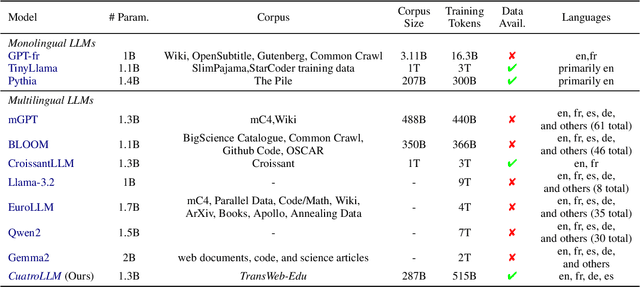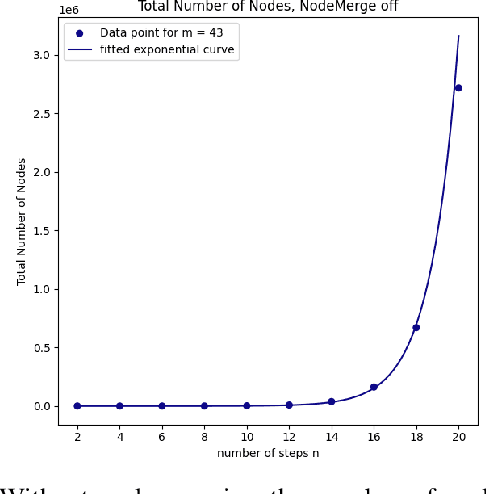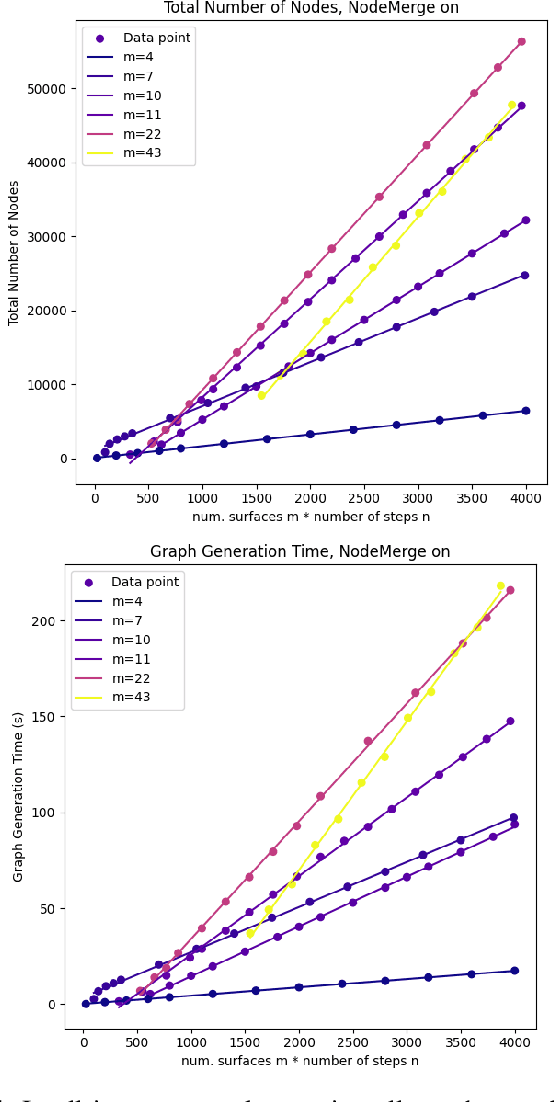Jiayi Wang
Computer Science and Engineering, University of California San Diego, San Diego, USA
A comparative analysis of rank aggregation methods for the partial label ranking problem
Feb 25, 2025Abstract:The label ranking problem is a supervised learning scenario in which the learner predicts a total order of the class labels for a given input instance. Recently, research has increasingly focused on the partial label ranking problem, a generalization of the label ranking problem that allows ties in the predicted orders. So far, most existing learning approaches for the partial label ranking problem rely on approximation algorithms for rank aggregation in the final prediction step. This paper explores several alternative aggregation methods for this critical step, including scoring-based and probabilistic-based rank aggregation approaches. To enhance their suitability for the more general partial label ranking problem, the investigated methods are extended to increase the likelihood of producing ties. Experimental evaluations on standard benchmarks demonstrate that scoring-based variants consistently outperform the current state-of-the-art method in handling incomplete information. In contrast, probabilistic-based variants fail to achieve competitive performance.
Multilingual Language Model Pretraining using Machine-translated Data
Feb 18, 2025Abstract:High-resource languages such as English, enables the pretraining of high-quality large language models (LLMs). The same can not be said for most other languages as LLMs still underperform for non-English languages, likely due to a gap in the quality and diversity of the available multilingual pretraining corpora. In this work, we find that machine-translated texts from a single high-quality source language can contribute significantly to the pretraining quality of multilingual LLMs. We translate FineWeb-Edu, a high-quality English web dataset, into nine languages, resulting in a 1.7-trillion-token dataset, which we call TransWebEdu and pretrain a 1.3B-parameter model, TransWebLLM, from scratch on this dataset. Across nine non-English reasoning tasks, we show that TransWebLLM matches or outperforms state-of-the-art multilingual models trained using closed data, such as Llama3.2, Qwen2.5, and Gemma, despite using an order of magnitude less data. We demonstrate that adding less than 5% of TransWebEdu as domain-specific pretraining data sets a new state-of-the-art in Arabic, Italian, Indonesian, Swahili, and Welsh understanding and commonsense reasoning tasks. To promote reproducibility, we release our corpus, models, and training pipeline under Open Source Initiative-approved licenses.
Warmup Generations: A Task-Agnostic Approach for Guiding Sequence-to-Sequence Learning with Unsupervised Initial State Generation
Feb 17, 2025Abstract:Traditional supervised fine-tuning (SFT) strategies for sequence-to-sequence tasks often train models to directly generate the target output. Recent work has shown that guiding models with intermediate steps, such as keywords, outlines, or reasoning chains, can significantly improve performance, coherence, and interpretability. However, these methods often depend on predefined intermediate formats and annotated data, limiting their scalability and generalizability. In this work, we introduce a task-agnostic framework that enables models to generate intermediate "warmup" sequences. These warmup sequences, serving as an initial state for subsequent generation, are optimized to enhance the probability of generating the target sequence without relying on external supervision or human-designed structures. Drawing inspiration from reinforcement learning principles, our method iteratively refines these intermediate steps to maximize their contribution to the final output, similar to reward-driven optimization in reinforcement learning with human feedback. Experimental results across tasks such as translation, summarization, and multi-choice question answering for logical reasoning show that our approach outperforms traditional SFT methods, and offers a scalable and flexible solution for sequence-to-sequence tasks.
OODFace: Benchmarking Robustness of Face Recognition under Common Corruptions and Appearance Variations
Dec 03, 2024



Abstract:With the rise of deep learning, facial recognition technology has seen extensive research and rapid development. Although facial recognition is considered a mature technology, we find that existing open-source models and commercial algorithms lack robustness in certain real-world Out-of-Distribution (OOD) scenarios, raising concerns about the reliability of these systems. In this paper, we introduce OODFace, which explores the OOD challenges faced by facial recognition models from two perspectives: common corruptions and appearance variations. We systematically design 30 OOD scenarios across 9 major categories tailored for facial recognition. By simulating these challenges on public datasets, we establish three robustness benchmarks: LFW-C/V, CFP-FP-C/V, and YTF-C/V. We then conduct extensive experiments on 19 different facial recognition models and 3 commercial APIs, along with extended experiments on face masks, Vision-Language Models (VLMs), and defense strategies to assess their robustness. Based on the results, we draw several key insights, highlighting the vulnerability of facial recognition systems to OOD data and suggesting possible solutions. Additionally, we offer a unified toolkit that includes all corruption and variation types, easily extendable to other datasets. We hope that our benchmarks and findings can provide guidance for future improvements in facial recognition model robustness.
Edge-Enhanced Dilated Residual Attention Network for Multimodal Medical Image Fusion
Nov 18, 2024



Abstract:Multimodal medical image fusion is a crucial task that combines complementary information from different imaging modalities into a unified representation, thereby enhancing diagnostic accuracy and treatment planning. While deep learning methods, particularly Convolutional Neural Networks (CNNs) and Transformers, have significantly advanced fusion performance, some of the existing CNN-based methods fall short in capturing fine-grained multiscale and edge features, leading to suboptimal feature integration. Transformer-based models, on the other hand, are computationally intensive in both the training and fusion stages, making them impractical for real-time clinical use. Moreover, the clinical application of fused images remains unexplored. In this paper, we propose a novel CNN-based architecture that addresses these limitations by introducing a Dilated Residual Attention Network Module for effective multiscale feature extraction, coupled with a gradient operator to enhance edge detail learning. To ensure fast and efficient fusion, we present a parameter-free fusion strategy based on the weighted nuclear norm of softmax, which requires no additional computations during training or inference. Extensive experiments, including a downstream brain tumor classification task, demonstrate that our approach outperforms various baseline methods in terms of visual quality, texture preservation, and fusion speed, making it a possible practical solution for real-world clinical applications. The code will be released at https://github.com/simonZhou86/en_dran.
Multilingual Pretraining Using a Large Corpus Machine-Translated from a Single Source Language
Oct 31, 2024



Abstract:English, as a very high-resource language, enables the pretraining of high-quality large language models (LLMs). The same cannot be said for most other languages, as leading LLMs still underperform for non-English languages, likely due to a gap in the quality and diversity of the available multilingual pretraining corpora. In this work, we find that machine-translated text from a single high-quality source language can contribute significantly to the pretraining of multilingual LLMs. We translate FineWeb-Edu, a high-quality English web dataset, into French, German, and Spanish, resulting in a final 300B-token dataset, which we call TransWeb-Edu, and pretrain a 1.3B-parameter model, CuatroLLM, from scratch on this dataset. Across five non-English reasoning tasks, we show that CuatroLLM matches or outperforms state-of-the-art multilingual models trained using closed data, such as Llama3.2 and Gemma2, despite using an order of magnitude less data, such as about 6% of the tokens used for Llama3.2's training. We further demonstrate that with additional domain-specific pretraining, amounting to less than 1% of TransWeb-Edu, CuatroLLM surpasses the state of the art in multilingual reasoning. To promote reproducibility, we release our corpus, models, and training pipeline under open licenses at hf.co/britllm/CuatroLLM.
An Efficient Representation of Whole-body Model Predictive Control for Online Compliant Dual-arm Mobile Manipulation
Oct 30, 2024Abstract:Dual-arm mobile manipulators can transport and manipulate large-size objects with simple end-effectors. To interact with dynamic environments with strict safety and compliance requirements, achieving whole-body motion planning online while meeting various hard constraints for such highly redundant mobile manipulators poses a significant challenge. We tackle this challenge by presenting an efficient representation of whole-body motion trajectories within our bilevel model-based predictive control (MPC) framework. We utilize B\'ezier-curve parameterization to represent the optimized collision-free trajectories of two collaborating end-effectors in the first MPC, facilitating fast long-horizon object-oriented motion planning in SE(3) while considering approximated feasibility constraints. This approach is further applied to parameterize whole-body trajectories in the second MPC for whole-body motion generation with predictive admittance control in a relatively short horizon while satisfying whole-body hard constraints. This representation enables two MPCs with continuous properties, thereby avoiding inaccurate model-state transition and dense decision-variable settings in existing MPCs using the discretization method. It strengthens the online execution of the bilevel MPC framework in high-dimensional space and facilitates the generation of consistent commands for our hybrid position/velocity-controlled robot. The simulation comparisons and real-world experiments demonstrate the efficiency and robustness of this approach in various scenarios for static and dynamic obstacle avoidance, and compliant interaction control with the manipulated object and external disturbances.
A New Theoretical Perspective on Data Heterogeneity in Federated Optimization
Jul 22, 2024



Abstract:In federated learning (FL), data heterogeneity is the main reason that existing theoretical analyses are pessimistic about the convergence rate. In particular, for many FL algorithms, the convergence rate grows dramatically when the number of local updates becomes large, especially when the product of the gradient divergence and local Lipschitz constant is large. However, empirical studies can show that more local updates can improve the convergence rate even when these two parameters are large, which is inconsistent with the theoretical findings. This paper aims to bridge this gap between theoretical understanding and practical performance by providing a theoretical analysis from a new perspective on data heterogeneity. In particular, we propose a new and weaker assumption compared to the local Lipschitz gradient assumption, named the heterogeneity-driven pseudo-Lipschitz assumption. We show that this and the gradient divergence assumptions can jointly characterize the effect of data heterogeneity. By deriving a convergence upper bound for FedAvg and its extensions, we show that, compared to the existing works, local Lipschitz constant is replaced by the much smaller heterogeneity-driven pseudo-Lipschitz constant and the corresponding convergence upper bound can be significantly reduced for the same number of local updates, although its order stays the same. In addition, when the local objective function is quadratic, more insights on the impact of data heterogeneity can be obtained using the heterogeneity-driven pseudo-Lipschitz constant. For example, we can identify a region where FedAvg can outperform mini-batch SGD even when the gradient divergence can be arbitrarily large. Our findings are validated using experiments.
NAS: N-step computation of All Solutions to the footstep planning problem
Jul 17, 2024



Abstract:How many ways are there to climb a staircase in a given number of steps? Infinitely many, if we focus on the continuous aspect of the problem. A finite, possibly large number if we consider the discrete aspect, i.e. on which surface which effectors are going to step and in what order. We introduce NAS, an algorithm that considers both aspects simultaneously and computes all the possible solutions to such a contact planning problem, under standard assumptions. To our knowledge NAS is the first algorithm to produce a globally optimal policy, efficiently queried in real time for planning the next footsteps of a humanoid robot. Our empirical results (in simulation and on the Talos platform) demonstrate that, despite the theoretical exponential complexity, optimisations reduce the practical complexity of NAS to a manageable bilinear form, maintaining completeness guarantees and enabling efficient GPU parallelisation. NAS is demonstrated in a variety of scenarios for the Talos robot, both in simulation and on the hardware platform. Future work will focus on further reducing computation times and extending the algorithm's applicability beyond gaited locomotion. Our companion video is available at https://youtu.be/Shkf8PyDg4g
Label-free Neural Semantic Image Synthesis
Jul 01, 2024Abstract:Recent work has shown great progress in integrating spatial conditioning to control large, pre-trained text-to-image diffusion models. Despite these advances, existing methods describe the spatial image content using hand-crafted conditioning inputs, which are either semantically ambiguous (e.g., edges) or require expensive manual annotations (e.g., semantic segmentation). To address these limitations, we propose a new label-free way of conditioning diffusion models to enable fine-grained spatial control. We introduce the concept of neural semantic image synthesis, which uses neural layouts extracted from pre-trained foundation models as conditioning. Neural layouts are advantageous as they provide rich descriptions of the desired image, containing both semantics and detailed geometry of the scene. We experimentally show that images synthesized via neural semantic image synthesis achieve similar or superior pixel-level alignment of semantic classes compared to those created using expensive semantic label maps. At the same time, they capture better semantics, instance separation, and object orientation than other label-free conditioning options, such as edges or depth. Moreover, we show that images generated by neural layout conditioning can effectively augment real data for training various perception tasks.
 Add to Chrome
Add to Chrome Add to Firefox
Add to Firefox Add to Edge
Add to Edge